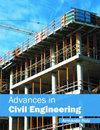Intelligent Algorithm for Rock Core RQD Based on Object Detection and Image Segmentation to Suppress Noise and Vibration
IF 1.6
4区 工程技术
Q3 CONSTRUCTION & BUILDING TECHNOLOGY
引用次数: 0
Abstract
In the construction of the civil engineering infrastructure, the noise and vibration are affected by the geological conditions, adopting specific construction techniques based on the geological conditions is of great significance in suppressing the noise and vibration caused by the construction. To classify and evaluate the rock mass quality, the rock quality designation (RQD) is adopted widely in the geological and mining engineering. Traditionally, to obtain RQD, lengths of drilling core pieces are measured and RQD is calculated manually, which is labor-expensive and time-consuming. With the development of the computational power, the image treatment driven by the computer vision creates a potential approach to obtain RQD automatically. In the present work, the image treatment process with the aid of the object detection and the image segmentation is adopted to obtain RQD automatically, based on the similarity of features such as color and texture, the segment anything model is adopted to detect the rock cores in the image, then, the YOLOv8 algorithm is adopted to train the model, and the gap features of the rock chip segments are extracted for segmentation of different rock core segments. To test the performance of the proposed approach, 10 boreholes from Shapingba Railway Comprehensive Reconstruction Project are adopted to conduct the case study. Compared to the traditional manual approach, RQD obtained by the proposed approach is relatively accurate and obviously efficient, namely, the average error is less than 5% and the time consumed is less than 70%.基于物体检测和图像分割的岩心 RQD 智能算法,用于抑制噪声和振动
在土木工程基础设施的施工过程中,噪声和振动会受到地质条件的影响,根据地质条件采用特定的施工技术对抑制施工产生的噪声和振动具有重要意义。为了对岩体质量进行分类和评估,地质和采矿工程中广泛采用了岩石质量指标(RQD)。传统上,要获得 RQD,需要测量钻孔岩心片的长度,并手工计算 RQD,费工费时。随着计算能力的发展,计算机视觉驱动的图像处理为自动获取 RQD 提供了一种可能的方法。在本研究中,采用了借助物体检测和图像分割的图像处理流程来自动获取 RQD,基于颜色和纹理等特征的相似性,采用 segment anything 模型来检测图像中的岩心,然后采用 YOLOv8 算法来训练模型,提取岩屑片段的间隙特征来分割不同的岩心片段。为测试所提方法的性能,采用沙坪坝铁路综合改造工程的 10 个钻孔进行案例研究。与传统的人工方法相比,建议方法获得的 RQD 相对准确,效率明显提高,即平均误差小于 5%,耗时小于 70%。
本文章由计算机程序翻译,如有差异,请以英文原文为准。
求助全文
约1分钟内获得全文
求助全文
来源期刊

Advances in Civil Engineering
Engineering-Civil and Structural Engineering
CiteScore
4.00
自引率
5.60%
发文量
612
审稿时长
15 weeks
期刊介绍:
Advances in Civil Engineering publishes papers in all areas of civil engineering. The journal welcomes submissions across a range of disciplines, and publishes both theoretical and practical studies. Contributions from academia and from industry are equally encouraged.
Subject areas include (but are by no means limited to):
-Structural mechanics and engineering-
Structural design and construction management-
Structural analysis and computational mechanics-
Construction technology and implementation-
Construction materials design and engineering-
Highway and transport engineering-
Bridge and tunnel engineering-
Municipal and urban engineering-
Coastal, harbour and offshore engineering--
Geotechnical and earthquake engineering
Engineering for water, waste, energy, and environmental applications-
Hydraulic engineering and fluid mechanics-
Surveying, monitoring, and control systems in construction-
Health and safety in a civil engineering setting.
Advances in Civil Engineering also publishes focused review articles that examine the state of the art, identify emerging trends, and suggest future directions for developing fields.
 求助内容:
求助内容: 应助结果提醒方式:
应助结果提醒方式:


